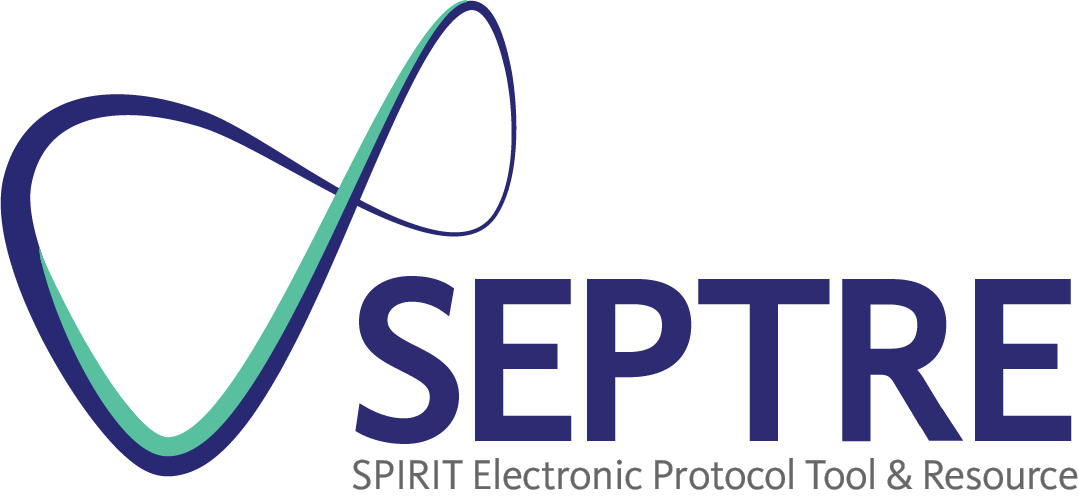Item 10: Inclusion and exclusion criteria for participants. If applicable, eligibility criteria for study centres and individuals who will perform the interventions (e.g., surgeons, psychotherapists).
Example 1
“Patients (or a representative) must provide written, informed consent before any study procedures occur (see Appendix 1 for sample Informed Consent Form) . . .
5.1. Inclusion Criteria
Patients eligible for the trial must comply with all of the following at randomization:
- Age ≥16 years
- Current admission under the care of the heart-failure service at the site
. . .
5.2. Exclusion Criteria
- Acute decompensation thought by the attending heart-failure physician to require or be likely to require PAC [pulmonary-artery catheter] during the next 24 hours. Such patients should be entered into the PAC Registry (see below).
- Inability to undergo PAC placement within the next 12 hours
. . .
Patients enrolled in other investigational drug studies are potential candidates for ESCAPE. As the ESCAPE protocol does not involve any investigational agents or techniques, patients would be eligible for dual randomization if they are on stable doses of the investigational drugs . . .
13. Study Network, Training, and Responsibilities
. . . To qualify, physicians responsible for PAC [pulmonary-artery catheter] placements will be required to show proof of insertion of ≥50 PACs in the previous year with a complication rate of <5%. Further, clinicians will need to show competence in the following areas to participate in the study: 1) insertion techniques and cardiovascular anatomy; 2) oxygen dynamics . . . and 7) common PAC complications.[Reference X] . . . we will assume basic competence in these areas after satisfactory completion of the PACEP [PAC educational programme] module.” 123
Example 2
“Trial centre requirements
A number of guidelines have stated thrombolysis should only be considered if the patient is admitted to a specialist centre with appropriate experience and expertise[Reference X]. Hospitals participating in IST-3 [third International Stroke Trial] should have an organized acute stroke service. The components of effective stroke unit care have been identified . . . In brief, the facilities (details of these requirements are specified in the separate operations manual) should include:
- Written protocol for the acute assessment of patients with suspected acute stroke to include interventions to reduce time from onset to treatment.
- Immediate access to CT [Computerised Tomographic] or MR [Magnetic Resonance] brain scanning (preferably 24 hours a day).
- A treatment area where thrombolysis may be administered and the patient monitored according to trial protocol, preferably an acute stroke unit.” 124
Explanation
Eligibility criteria for potential trial participants define the study population. They can relate to demographic information; type or severity of the health condition; comorbidities; previous or current treatment; diagnostic procedures; pregnancy; or other relevant considerations.125 In trials of operator-dependent interventions such as surgery and psychotherapy, it is usually important to promote consistency of intervention delivery by also defining the eligibility criteria for care providers and centres where the intervention will be administered.126
Clear delineation of eligibility criteria serves several purposes. It enables study personnel to apply these criteria consistently throughout the trial.127 The choice of eligibility criteria can affect recruitment and attrition,67;114;115;117;118;128-130 as well as outcome event rates.39;131 In addition, the criteria convey key information related to external validity (generalisability or applicability).132 The importance of transparent documentation is highlighted by evidence that the eligibility criteria listed in publications are often different from those specified in the protocol.125;133;134
Certain eligibility criteria warrant explicit justification in the protocol, particularly when they limit the trial sample to a narrow subset of the population.132;135;136 The appropriateness of restrictive participant selection depends on the trial objectives.137 When trial participants differ substantially from the overall population to whom the intervention will be applied, the trial results may not reflect the impact in real world practice settings.134;138-144
| 9: Study setting | 11a: Interventions |

